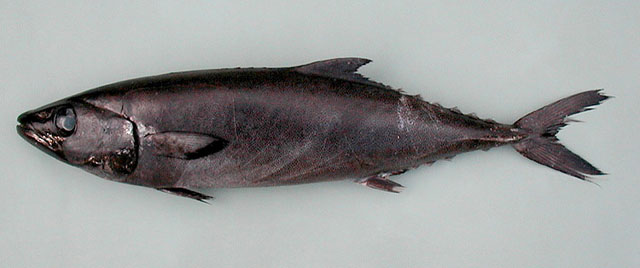| Gempylidae (Snake mackerels) |
| 200 cm SL (male/unsexed); max.weight: 45 kg |
|
benthopelagic; marine; depth range 200 - 1100 m, oceanodromous |
| Tropical and temperate seas of the World, but probably not occurring in the northern Indian Ocean. Northwest Atlantic: Canada (Ref. 5951). Eastern Atlantic: known from 13°N off Guinea to Lobutu, Angola (Ref. 10816). |
|
Dorsal spines (total): 8-9; Dorsal soft rays (total): 16-18; Anal spines: 1-2; Anal soft rays: 12-14; Vertebrae: 31. Body almost uniformly dark brown, becoming almost black with age. Pelvic fins well developed, with I spine and 5 soft rays (Ref. 9784). Prominent lateral keel on caudal peduncle, flanked by smaller accessory keels above and below (Ref. 26938). |
| Occurs mainly over the continental slope, down to 200 m and more (Ref. 6181). Migrates upward at night (Ref. 6181). Feeds on squid, crustaceans and a wide variety of fishes (Ref. 6181). Flesh oily and may have purgative properties (Ref. 9784). Sometimes caught by tuna long-liners (Ref. 26938). Marketed frozen and as fish cakes in Japan (Ref. 9302). |
|
Least Concern (LC); Date assessed: 22 August 2012 Ref. (130435)
|
| harmless |
|
Source and more info: www.fishbase.org. For personal, classroom, and other internal use only. Not for publication.

